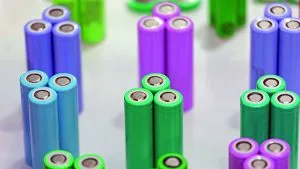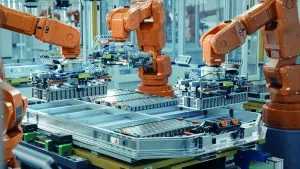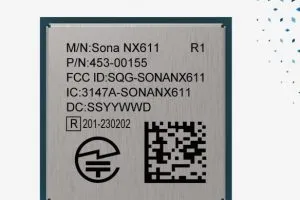 Solid-state batteries are creating a real sense of anticipation in industrial and automotive sectors. Their design characteristics could make them lighter, safer and stronger. With greater energy density than existing battery solutions, new applications and use cases in areas such as electric vehicles and energy storage could be created. While market penetration is still low, solid-state batteries hold a lot of promise.
Solid-state batteries are creating a real sense of anticipation in industrial and automotive sectors. Their design characteristics could make them lighter, safer and stronger. With greater energy density than existing battery solutions, new applications and use cases in areas such as electric vehicles and energy storage could be created. While market penetration is still low, solid-state batteries hold a lot of promise.
The question is, what is the current state of play when it comes to maturity and commercialisation? Can solid-state batteries overcome reliability, scalability and cost challenges to meet their full potential? And if so, could they supercharge the pace of adoption for more electric technologies, helping to reduce carbon emissions en route to net zero?
Solid-state vs Li-ion designs
To answer those questions, it is worth revisiting the fundamental composition of lithium-ion (Li-ion) and solid-state battery cells. Li-ion designs have two solid electrodes, the cathode and the anode, divided by a porous membrane known as the separator. The separator acts as a barrier to prevent direct contact between the electrodes while allowing lithium ions to pass through.
The liquid Li-ion electrolyte solution, which permeates both the separator and the electrodes, is crucial for the movement of lithium ions between the anode and cathode during the charging and discharging cycles. This ionic movement is essential for the electrochemical reactions that generate electric current within the cell.
Solid-state batteries differ significantly. Here, a solid electrolyte replaces the liquid electrolyte and serves as the separator. This solid electrolyte substrate, which can be made of ceramic, glass or a solid polymer, effectively separates the cathode and anode, which may consist of lithium or other advanced materials.
Using a solid electrolyte not only enhances the battery’s safety by reducing the risk of leakage and flammability, but can also increase its energy density and allow for thinner battery designs. The potential density of solid-state cells in the short term is around 1kWh/kg. This value surpasses the capabilities of current cells and could lead to a weight reduction of up to 30% for the same capacity. In the longer term the potential of solid-state cells is as high as 11kWh/kg.
Materials and design
There is excitement around continued breakthroughs in advanced materials and design, particularly in solid electrolytes. A recent article in the Multidisciplinary Scientific Journal outlines these advances. It concentrates on three core areas: inorganic solid electrolytes; solid polymer electrolytes; and composite solid electrolytes.
For inorganic solid electrolytes, activity has focused on improving safety and energy density. Engineers are looking to overcome air and electrochemical instabilities through innovative material design and interfacial engineering.
There has been progress with solid polymer electrolytes, improving ionic conductivity and mechanical strength. Developments such as the introduction of new polymer composites and ‘ultra’ thin membranes promise better performance and safety. Lastly, composite solid electrolytes have a role to play in bridging the gap between inorganic and polymer electrolytes, combining high ionic conductivity with flexibility. They are being tailored for mass production through scalable fabrication techniques.
The rapid development of exciting technologies, such as quantum computing and artificial intelligence (AI), is being used to accelerate the discovery of new materials suitable for use in solid-state batteries. This could lead to new designs, such as thinner, more flexible batteries with higher energy density, as well as innovations in automotive packaging.
Scalable production
Material selection and refinement is not the only area of activity. Solid-state batteries also face scaling and sustainability challenges, especially if they are to play a role in the shift towards a more circular economy. In the automotive sector, for example, car makers such as Mercedes, Toyota and Volkswagen plan to bring solid-state batteries towards commercialisation, but these projects will take time to materialise.
An IEEE Spectrum article highlights some of the challenges that lie ahead. It outlines a long curve of validation in five areas: safety; performance; life; cost; and environmental. Each area has its own sub-sectors, with performance ratings for temperature, altitude, shock and vibration. The IEEE stated that broad adoption of solid-state batteries will not happen until car makers can verify the new technology’s abilities in each critical area.
Even if this is achieved, manufacturing and scalability obstacles must be overcome. This will probably require the construction of new facilities, and then validation, prototyping and testing through duty cycles. The previously mentioned Multidisciplinary Scientific Journal research says that manufacturing solid-state batteries requires the exacting fabrication of thin, defect-free layers of solid electrolyte and the facilitation of ultra-fine precision contact with the electrodes. These processes require highly accurate engineering and control.
Traditional manufacturing methods, such as powder pressing or sintering, may not be suitable for producing thin, defect-free electrolyte layers with high ionic conductivity. Developing novel manufacturing techniques, such as solution-infusion, self-assembly, or tape-casting, will likely be required. Scaling such processes presents quality and consistency obstacles that must be overcome to achieve commercial viability.
Additive manufacturing
There is cause for optimism. Once, Li-ion batteries would have faced their own range of manufacturing challenges, yet the innovation and ingenuity of engineers made sure these obstacles were overcome. There is no reason to think this will not be the case with solid-state batteries too.

Present EV batteries are large, heavy and difficult to manufacture (Source: IM Imagery/stock.adobe.com)
Advanced manufacturing techniques, such as 3D printing and automation, could reduce costs and improve scalability. Additive manufacturing, for example, could allow the assembly of different solid electrolytes in more complex geometric configurations with high printing resolutions.
Another piece of the puzzle will be the importance of using sustainable materials and processes, including battery recycling. Traditional lead batteries have a recycling rate of 99%, one of the highest of any product in the world, according to Battery Council figures. The recycling rate for Li-ion batteries is much lower than that and a further decline for solid-state batteries would not align with circular economy principles.
One challenge is that the solid electrolyte and electrode materials are often fused, making them hard to separate for recycling. Currently, there is a lack of standardisation around recycling processes for solid-state designs. All these factors will require further research and development to ensure solid-state batteries offer a step forward in terms of sustainability.
Solid-state batteries represent an exciting technological advancement. Despite being at the early stage of commercialisation, their promise is being realised through continued advancements in materials and design, together with engineers working hard to overcome challenges in manufacturing processes, scalability and cost. Meanwhile, exciting technologies such as AI are likely to increase the pace of development, while 3D printing might open new avenues to production flexibility.
With such steadfast innovation, solid-state batteries could transform a broad range of industries, such as automotive, consumer electronics and grid-level energy storage, supporting a cleaner and more electrified future for all.
AI screening
A project involving Pacific Northwest National Laboratory and Microsoft used an AI program to screen more than 32 million theoretical solid electrolyte materials, generated by swapping different elements into existing electrolyte structures. The program filtered them based on their properties.
The initial screening helped to reduce them from 32 million to 0.5 million materials in a matter of hours.
Further refinement of selection criteria resulted in the final identification of a new material blended from sodium, lithium, yttrium and chloride ions, which researchers say could be used to build a low-lithium, solid-state battery.
The AI program achieved the entire scope of work in around 80 computer hours, replacing a task of screening through all those materials experimentally that would have taken 20 years.
See also: Power content
 Electronics Weekly
Electronics Weekly



